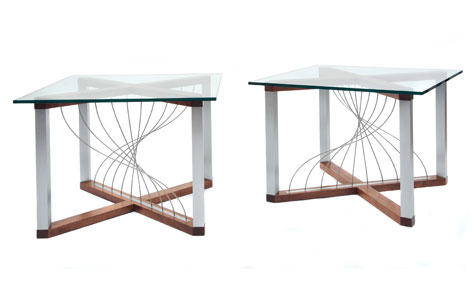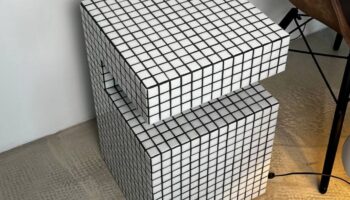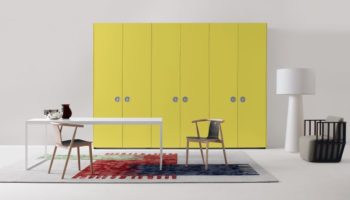The Mind-Bending Twists of Peter Harrison’s Mobius End Tables
Lacking both the mathematical mind set and the sense for spatial relationships, I’ve never been much of a science guy, but that hasn’t stopped me from educating myself about the origins of Peter Harrison’s innovative Mobius End Tables, a collection of aesthetically arresting pieces that “make imaginative use of material and form to create elegant end tables that are extremely light and minimal yet have an extreme presence.”
Mobius End Table. Designed and Manufactured by Peter Harrison.
Peter Harrison’s Mobius End Tables Fuse Glass, Metal, and Wood into a Dynamic Whole
Mobius refers to a mathematical conundrum of sorts, an “endless loop with a twist so that there is only one side.” If one were to extrapolate the curve of the cables in the piece, one would find a continuously flat surface within the circularity of an infinite loop. That’s a lot to bend your mind around and especially fascinating as these inspired pieces resemble nothing so much as a miniaturized Brooklyn Bridge, or a cross-section of a van der Rohe building, or a steel lattice of trapeze netting from some dystopian circus act.

If that sounds confounding, it’s because Harrison’s tables combine so many disparate elements, juxtapose so many odd shapes and engaging textures. The tables feature a ½” thick glass top, mahogany cross pieces, an aluminum square tube, and an artfully contorted steel cable (something of a trademark for designer Harrison).

The combination gives Mobius its compelling aesthetic and textural allure—what the designer refers to as “sculpture as furniture.” Indeed, there’s something inherently artful about the arrangement of glass upon steel upon a framework of wood. The whole assemblage evokes a symphonic motif, which makes the crowning touch of the twisting cable all the more apropos, as if the tables were some unfathomable instrument waiting to be played—eternally in want of the right strummer’s hand.
About the Designer: Peter Harrison has a reputation for synthesizing multiple materials within single pieces. His arsenal includes wood, steel, glass, case concrete, aluminum, and “various off-the-shelf and custom fasteners.” The materials palette explains the multiple permutations and fascinating juxtapositions within each one of his sinuous and sculptural tables. Harrison’s pieces almost never have glued joints—an unusual choice that, contrary to appearances, is purely aesthetic, as it reinforces his singular vision: “I try not to have any element there just because it is functional. Every element should be a harmonious part of the piece whether it’s serving to support it or just to visually fulfill it.”




Leave a Reply